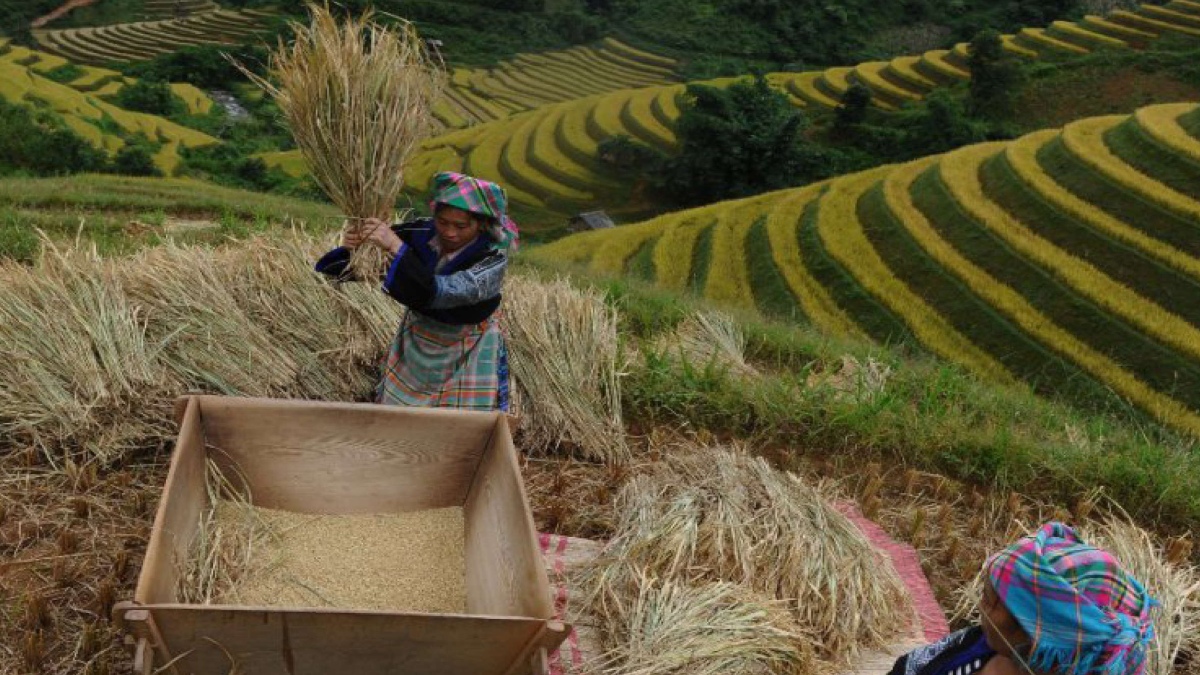


The severe health and economic impacts of the COVID-19 pandemic have disrupted food systems and upended livelihoods. Yet pandemic responses have also demonstrated the power of well-crafted policies to blunt the impact of major shocks while laying the groundwork for stronger, more resilient food systems, according to the 2021 Global Food Policy Report.
A virtual event was co-organized by IFPRI South Asia, Indian Council of Agricultural Research (ICAR) and Research and Information System for Developing Countries (RIS) today, to present the highlights of the report in the South Asian context. Policy makers and thought leaders shared their perspectives on COVID-19’s impacts on our food systems and discussed the lessons the report draws from the current crisis for helping transform food systems to reduce the ongoing impacts of the pandemic, better prepare for future shocks, and address longstanding weaknesses and inequalities.
“We have known for a while now that there are major problems with our food systems, that they are unequal and unsustainable,” said Johan Swinnen, director general of IFPRI. “This crisis has revealed these problems in a way that none of us can ignore, but it has also demonstrated that we have effective ways to address these problems”.
“UN Sustainable Development Goal 2 (pertaining to ending hunger and malnutrition by 2030) is a critical area that needs to be addressed. In the backdrop of the COVID-19 pandemic, the biggest contribution from India was that there were no starvation deaths despite closure of borders, disruption of value chains and locust attacks. The record wheat procurement speaks volumes about our food system,” said Dr P. K. Anand, Visiting Fellow, RIS. He said important aspects that require great attention include reduction of carbon footprint, ensuring climate resilience, financing mechanisms, localization of efforts to provide nutritious food to people, and making sure that there are sufficient stocks of a variety of food items including those like millets that can address issues of comorbidities.
The pandemic in South Asia disturbed years of fast economic growth, reduction in poverty, and overall improvement in social indicators. In 2020, South Asian political leaders responded to the pandemic’s first wave by imposing lockdowns to flatten the curve of infections. To mitigate the impacts on the economy governments enacted a wide range of policies aimed at saving lives, protecting livelihoods and stimulating economies.
“The Global Food Policy Report (GFPR) 2021, highlights that the countries in the region did much better than the expert predictions in terms of economic performance, food price stabilization, and protecting livelihoods. However, the report also cautioned that there’s no room for complacency, which unfortunately turned out to be true during the second wave that overwhelmed health systems and significantly disrupted livelihoods”, said Shahidur Rashid, Director- IFPRI, South Asia. 2
Rashid went on to caution that the region is still reeling under the devastating impact of the second wave, “While vaccinations have been ramped up and the caseloads have slowly declined, there are uncertainties as to how things will play out in the region for agriculture and food systems”.
The report underscores that the pandemic has revealed both resilience and vulnerabilities in South Asian food systems. Across the region, the agriculture sector grew, food prices remained relatively stable, and no food security crisis was reported during the first wave. This resilience can largely be attributed to the region’s decades investments in infrastructure and institutions for social transfers and safety nets programs, as well as the expansion of many of these programs.
Surveys conducted by IFPRI found that public transfer systems for food, security, health, and nutrition have largely performed well in the region. In India the Pradhan Mantri Garib Kalyan Yojana (PMGKY) effectively reached smallholder farmers. Similar safety net programs, like Pakistan’s EHSAAS program, which provides direct cash transfers to about 80 million people, extended additional coverage to 6 million families during the pandemic. In Bangladesh, the government increased the social protection budget from 2.9 percent of national GDP in 2019/20 to 3.01 percent in response to the pandemic.
One of the key vulnerabilities that the pandemic illuminated is the fragility of many South Asian labor markets, especially in the nonfarm and informal sectors which are vital for both economic and food systems transformation. The strict lockdowns led to the return of many migrant laborers to their hometowns, creating scarcity of labor in the agricultural sector and threatening nutrition and food security.
The report finds that South Asia’s international remittance inflows also proved vulnerable. As of December 2020, remittance flows had declined by about US$10 billion for the region.
While the pandemic has raised new challenges, researchers stressed that we cannot lose sight of old challenges standing in the way of an inclusive and sustainable food system transformation for the region.
“Agriculture and food systems in South Asia have demonstrated unexpected resilience in the face of the pandemic. However, the region cannot afford to be complacent because growth in the nonfarm and service sectors is an essential precondition for economic and food system transformation, and COVID-19 has reminded South Asia how vulnerable these sectors are. Therefore, it’s important that the vulnerabilities of these sectors are addressed at the same time keeping in consideration that the region must not lose sight of the structural challenges to transforming economic and food systems”, said Rashid.